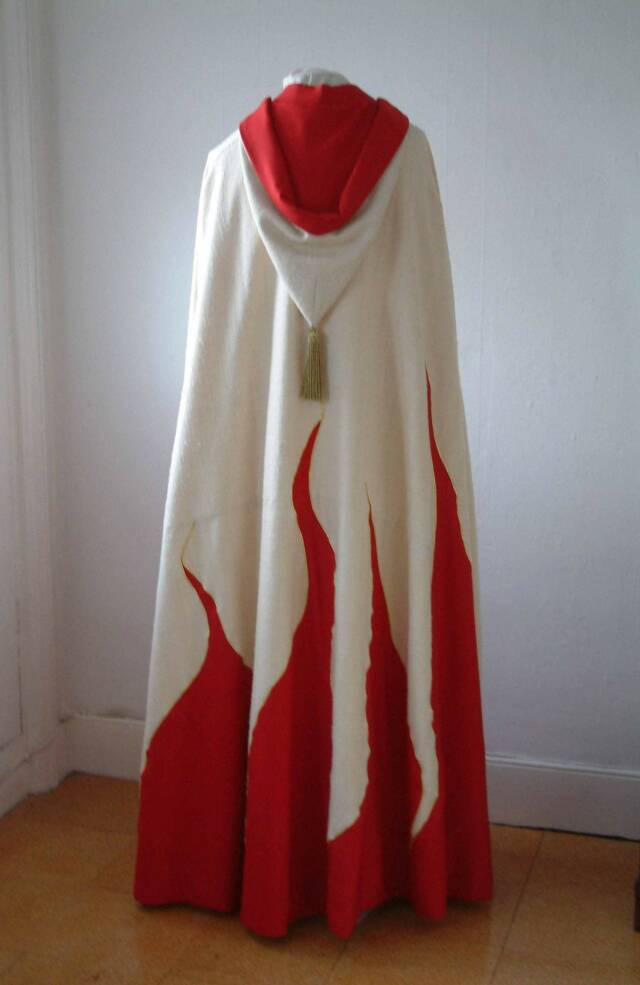Under all these different forms the cope has not substantially changed its character or shape.
It was a vestment for processions, and one worn by all ranks of the clergy when assisting at a function, but never employed by the priest and his sacred ministers in offering the Holy Sacrifice.
At the present day it is still, as the worn by cantors on certain festal occasions in the solemn Office; but it is also the vestment assigned to the celebrant, whether priest or bishop, in almost all functions in which the chasuble is not used, for example in processions, in the greater blessings and consecrations, at solemn Vespers and Lauds, in giving Benediction of the Blessed Sacrament, at the absolutions and burial of the dead, at the Asperges before Mass, etc.
As regards colour the cope follows that of the day, and it may be made of any rich or becoming material. Owing to its ample dimensions and unvarying shape, ancient copes are preserved to us in proportionately greater numbers than other vestments and provide the finest specimens of medieval embroidery we possess.
We are also indebted to the use of copes for some magnificent specimens of the jeweller's craft. The brooch or clasp, meant to fasten the cope in front, and variously called morse, pectoral, bottone, etc., was an object often in the highest degree precious and costly.
The Cope
